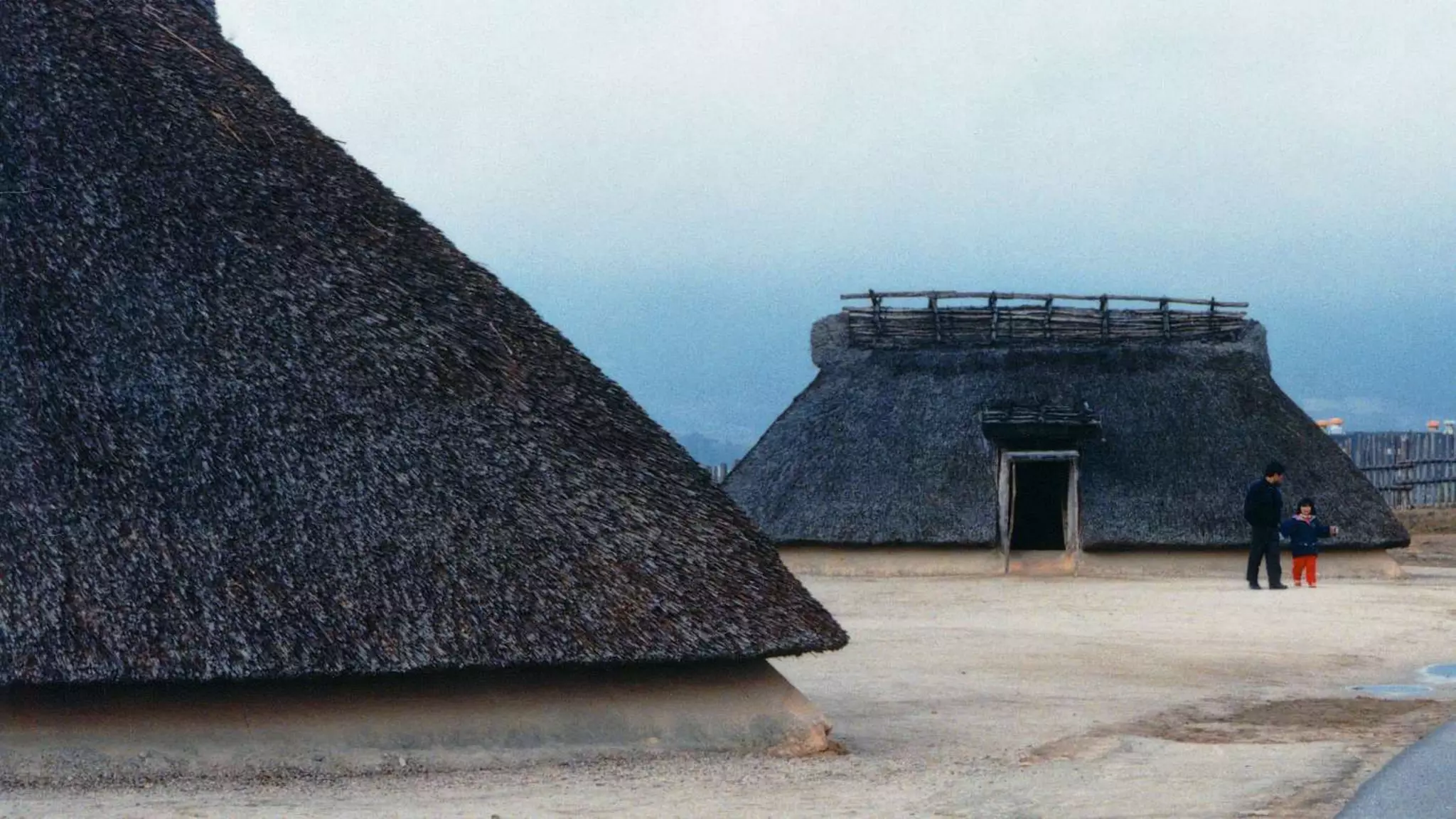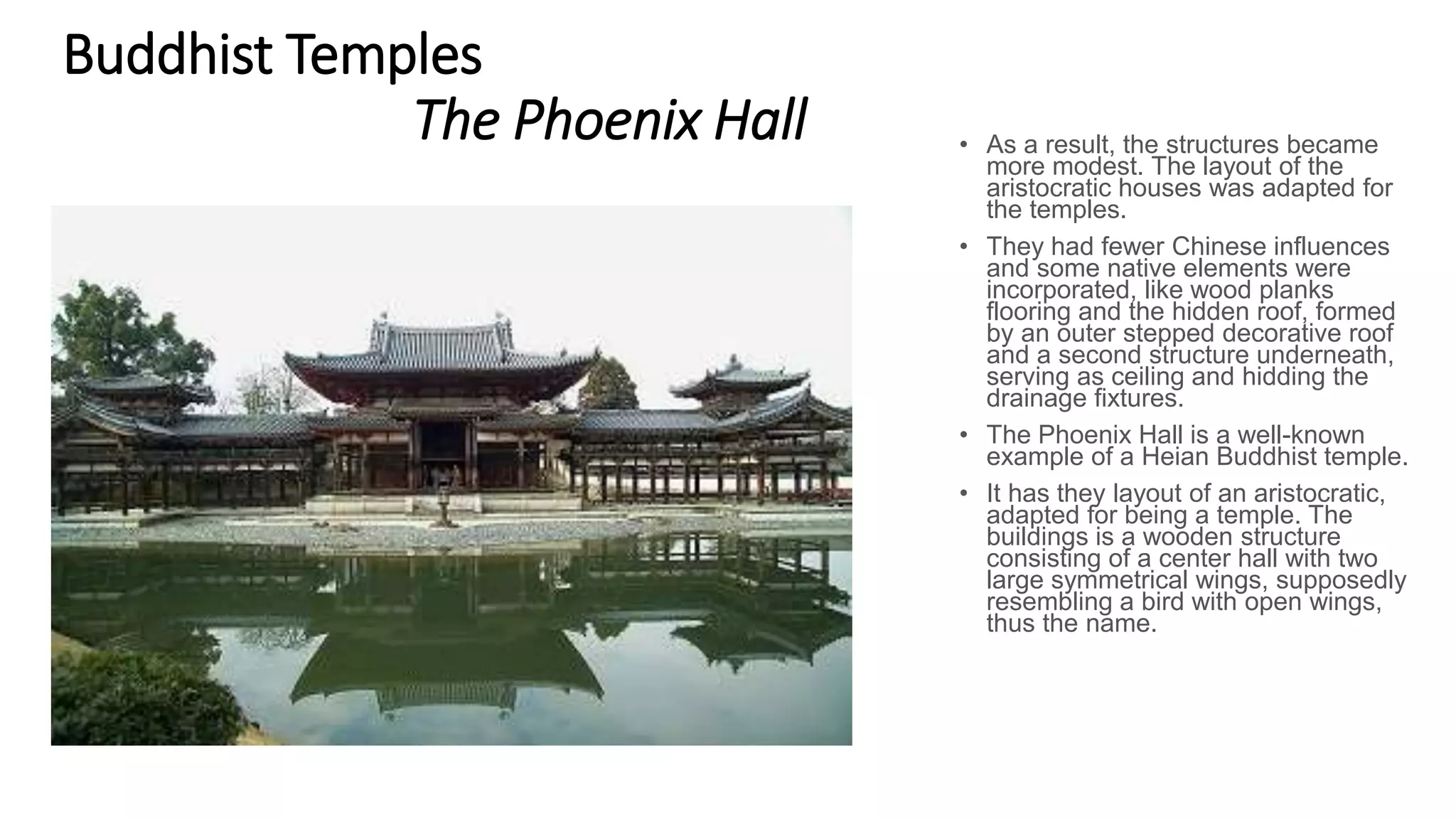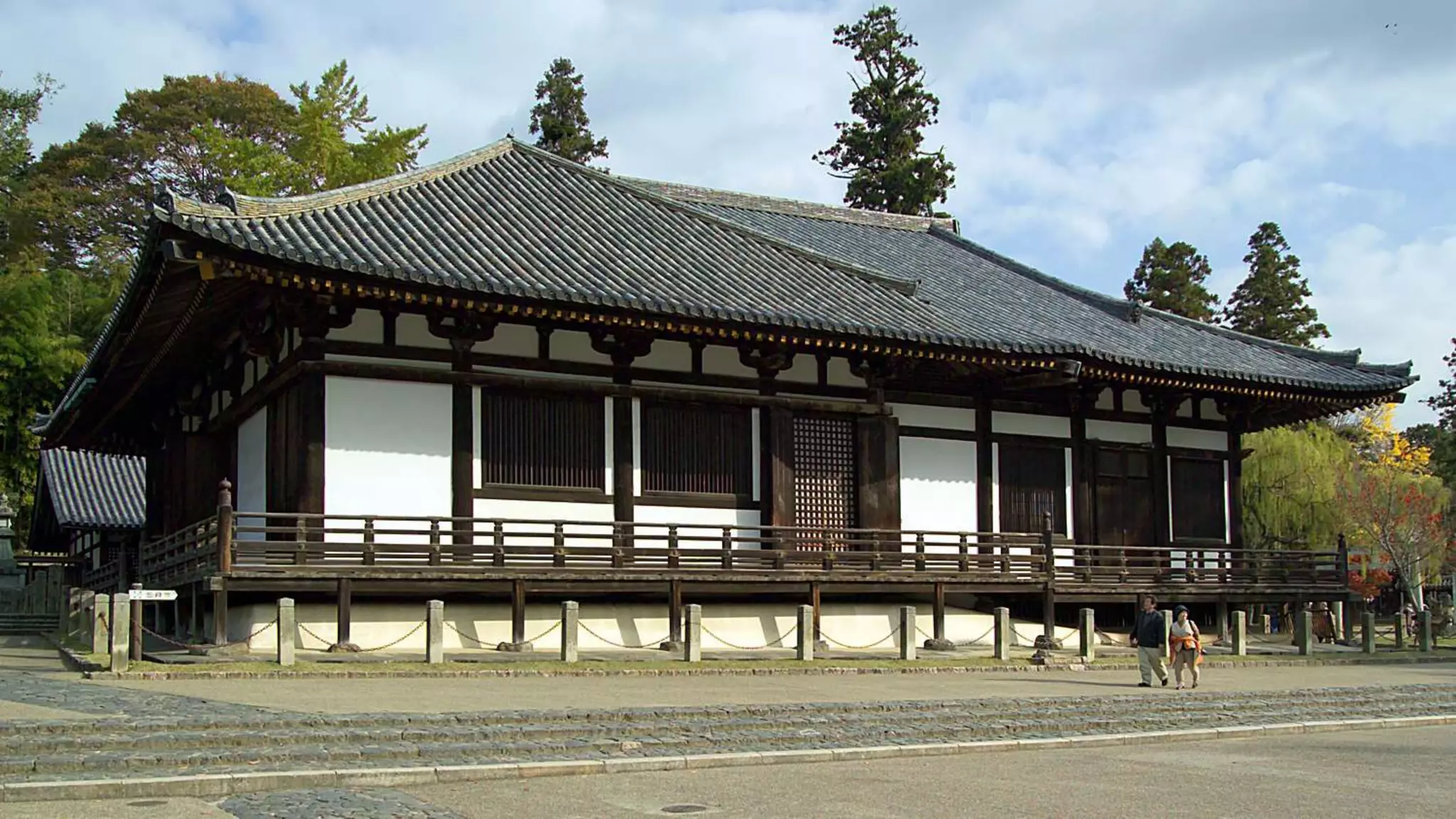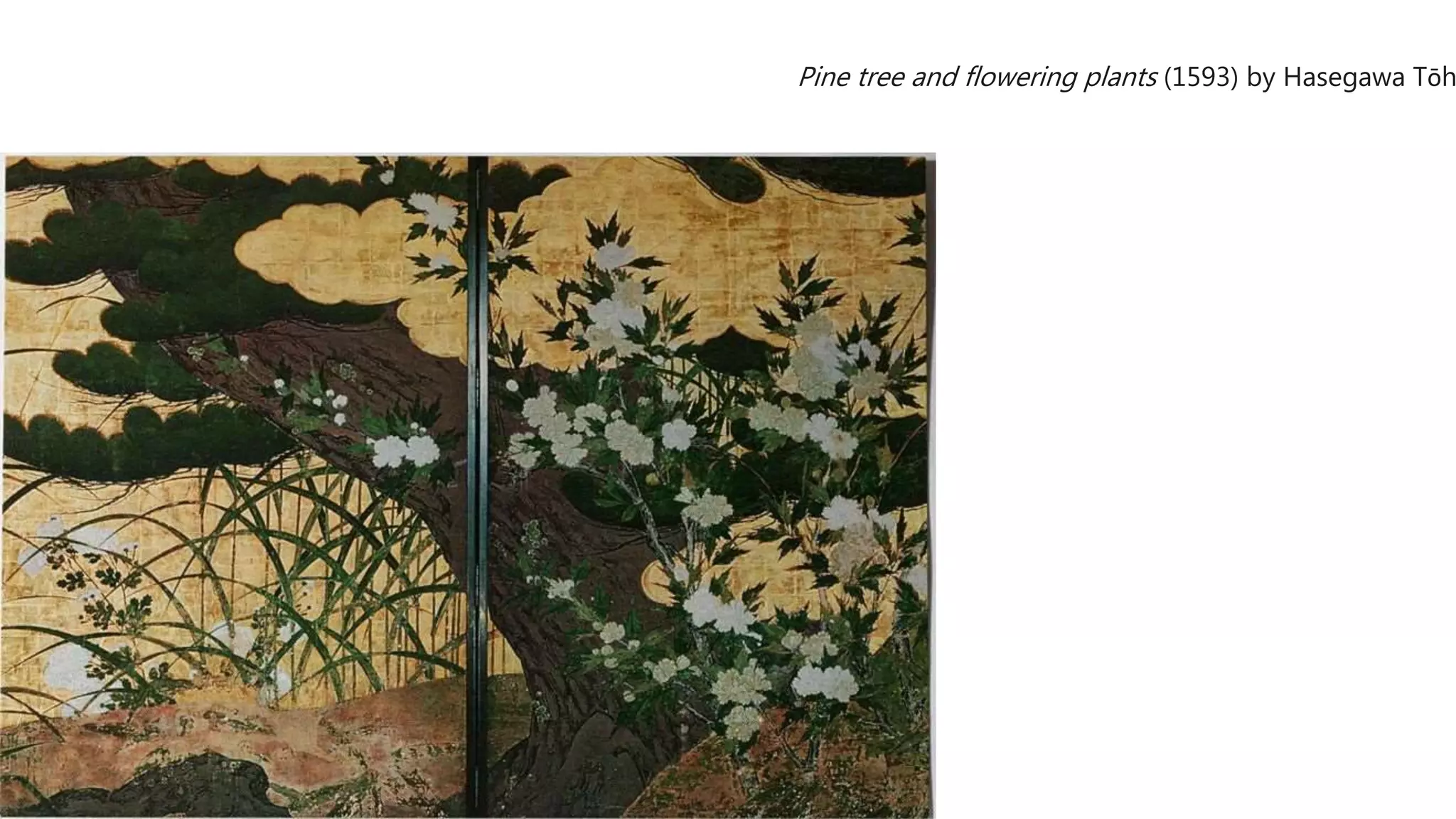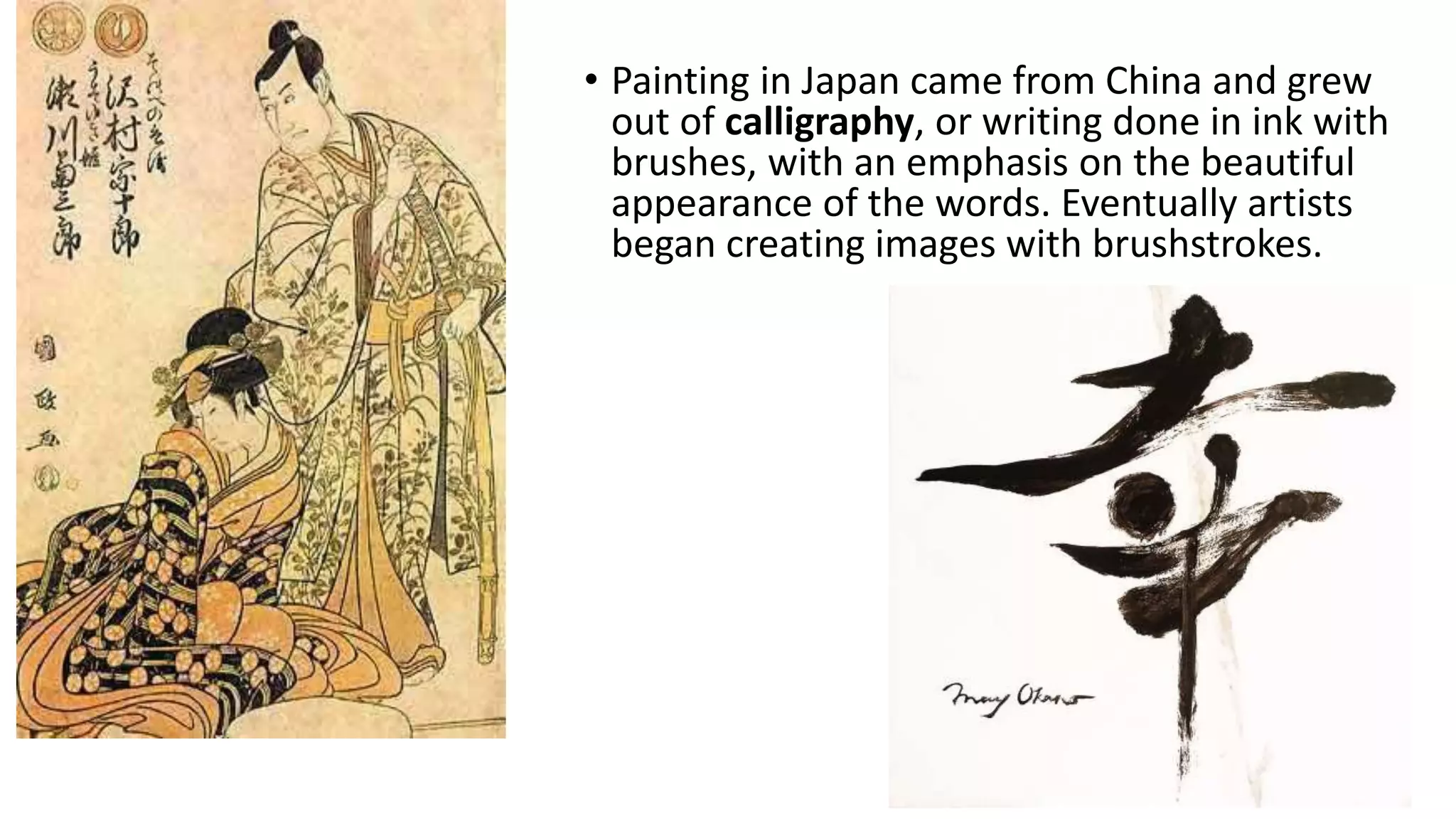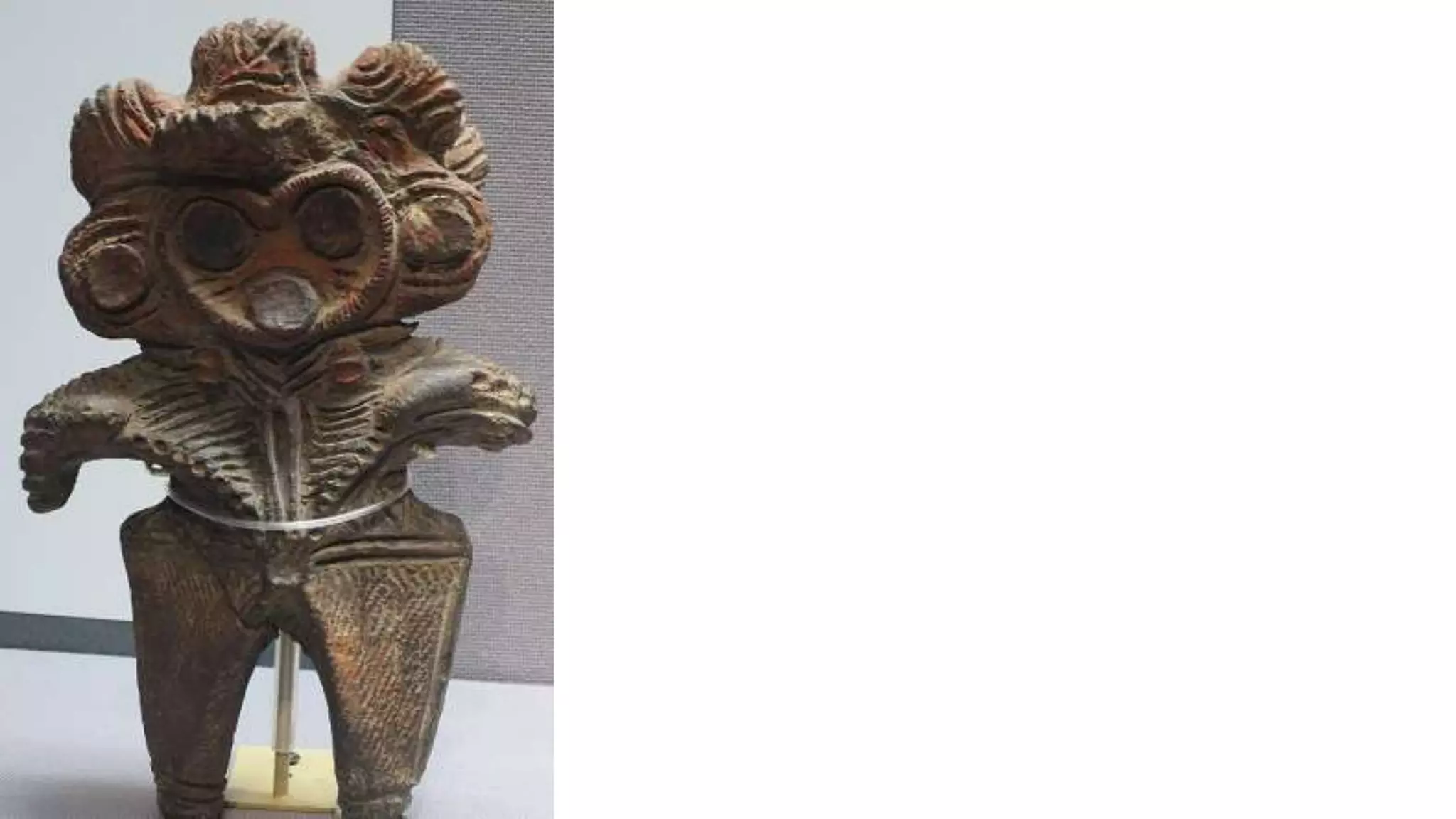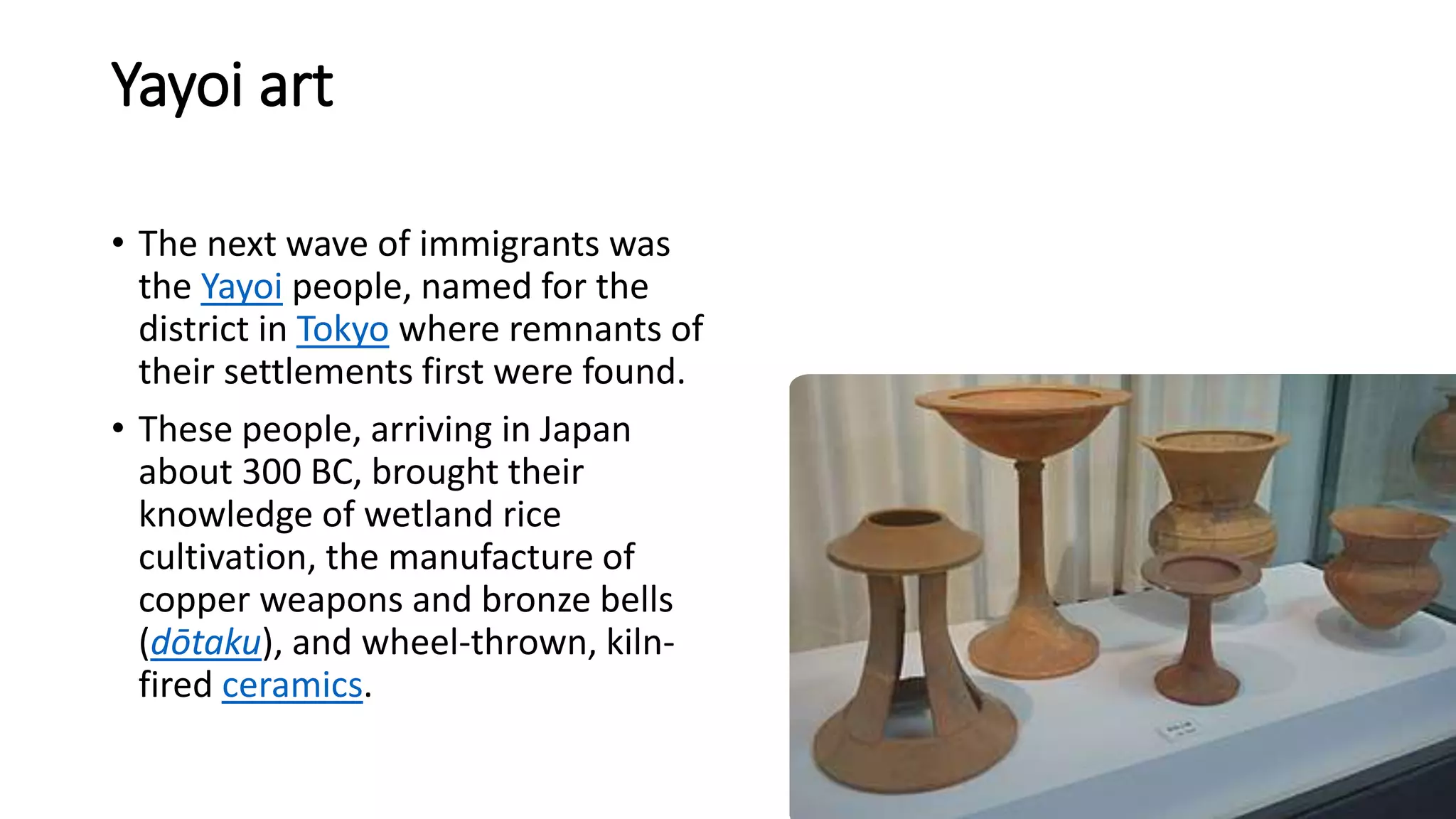Japanese art was influenced by Buddhism, Chinese art, and nature. Some key characteristics include wood as an important material, landscape paintings, calligraphy, printmaking, and sculptures related to fertility rituals and funerary rituals. Early Japanese architecture consisted of pit houses made of wood during the Jomon period. Later, architecture was influenced by Chinese styles seen in structures like the Heian palace and Buddhist temples. Sculptures included ceramic vessels and figurines from the Jomon period as well as later Buddhist statues.





